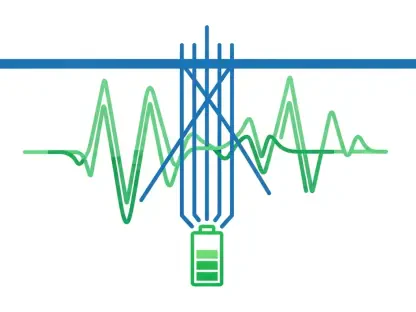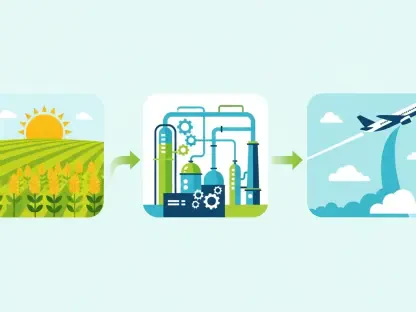In a rapidly evolving landscape, the US electric vehicle (EV) market is witnessing a seismic change as traditional automakers challenge the long-standing dominance of the industry pioneer. Recent data paints a striking picture: overall EV sales dropped by 6.3% in the second quarter, totaling 310,800 units, with much of this decline tied to a significant slump for the market leader, which saw a loss of 21,000 units. Meanwhile, General Motors (GM) has emerged as a formidable contender, capturing a substantial 15% market share and selling one EV for every three from its primary competitor. This shift signals a broader trend where affordability, brand trust, and strategic offerings are reshaping consumer preferences. As the market dynamics transform, the interplay of corporate strategies, policy changes, and buyer sentiment offers a glimpse into the future of sustainable transportation, raising questions about who will lead the charge in this electrified era.
Rising Competition in the EV Arena
GM’s Strategic Surge in Market Share
The ascent of GM in the US EV market marks a pivotal moment, as the company has tripled the market presence of other traditional automakers like Ford, securing a noteworthy position. This growth is largely fueled by a lineup of competitively priced models that resonate with a wide range of buyers. For instance, the Chevrolet Equinox EV, starting at $33,600, offers an accessible entry point for those transitioning to electric, while the Cadillac Optiq appeals to luxury seekers with a familiar badge. GM’s leadership has emphasized profitability as a guiding principle, ensuring that each vehicle delivers on design, performance, and range. This approach has not only attracted new customers but also retained loyal ones who value the blend of innovation and heritage. The result is a robust portfolio that caters to diverse needs, positioning GM as a serious rival in a space once overwhelmingly dominated by a single player. As consumer demand for affordable options grows, GM’s calculated moves are redefining expectations in the industry.
Challenges Facing the Market Leader
At the same time, the once-unassailable leader in the EV sector is grappling with a notable decline, with sales drops contributing heavily to the overall market downturn. A significant portion of this slump—amounting to a 21,000-unit loss—has been linked to external factors, including public backlash tied to controversial leadership decisions that have alienated potential buyers. This erosion of consumer confidence comes at a critical juncture when competition is intensifying, allowing other automakers to gain ground. Unlike in previous years when the company held an 80% market share, the current landscape shows a dramatic narrowing of that lead. The shift underscores a vulnerability that competitors like GM are quick to exploit with more accessible pricing and targeted marketing. As the market evolves, the ability to rebuild trust and adapt to changing consumer sentiments will be crucial for maintaining relevance in an increasingly crowded field.
Broader Trends and Future Uncertainties
Policy Impacts and Incentive Deadlines
The US EV market faces significant headwinds due to shifting federal policies that threaten long-term adoption rates. With the dismantling of clean-air mandates and federal incentives, forecasts for EV market share by 2030 have been drastically revised downward from 48% to 27%, according to industry analysts. This policy uncertainty looms large as a barrier to widespread acceptance, particularly for buyers reliant on financial incentives to offset upfront costs. In the short term, an approaching deadline for federal tax credits of up to $7,500 per vehicle, set to expire on September 30, has spurred a rush of purchases. Manufacturers and dealers are capitalizing on this urgency, creating campaigns to drive sales before the window closes. Consumer behavior reflects this trend, with many accelerating their buying decisions to secure savings. Such dynamics highlight the critical role of government support in shaping the pace of EV adoption, raising questions about the industry’s resilience in the face of regulatory shifts.
Consumer Sentiment and Market Adaptation
Consumer perspectives are also playing a pivotal role in reshaping the EV landscape, as buyers increasingly prioritize affordability and reliability over novelty. Stories from individuals like Janine Warren from Oklahoma, who switched to an electric Cadillac to reduce her carbon footprint while enjoying a quieter ride, illustrate a growing confidence in EV technology. This shift is further evidenced by a broader demand for vehicles that balance cost with performance, a niche GM has effectively targeted. Meanwhile, other automakers like Honda have reported sales upticks, while Ford faces setbacks with software issues halting a key model. As buyers become more discerning, the industry must adapt to meet expectations for range, design, and value. The evolving sentiment suggests a permanent move away from combustion engines for some, though the pace of this transition hinges on addressing barriers like cost and infrastructure. These insights underscore the importance of aligning product offerings with real-world needs to sustain momentum.
Reflecting on a Shifting Landscape
Looking back, the recent quarters revealed a transformative period for the US EV market, where GM carved out a significant foothold through strategic pricing and brand appeal, narrowing the gap with a once-dominant player. The challenges faced by the industry leader, compounded by a broader sales decline, underscored vulnerabilities that competitors swiftly leveraged. Policy changes cast a shadow over long-term growth, yet the rush to secure expiring incentives demonstrated consumer readiness to embrace electric options under the right conditions. Moving forward, automakers must prioritize affordability and innovation to maintain this momentum, while policymakers could play a decisive role by reinstating supportive measures. As the market continues to evolve, collaboration between industry stakeholders and regulators will be essential to overcome uncertainties and build a sustainable future for electric mobility, ensuring that the progress made does not falter in the face of emerging obstacles.









